 W
WTheodore Wilbur Anderson was an American mathematician and statistician who has specialized in the analysis of multivariate data. He was born in Minneapolis, Minnesota. He was on the faculty of Columbia University from 1946 until moving to Stanford University in 1967, becoming Emeritus Professor in 1988. He served as Editor of Annals of Mathematical Statistics from 1950 to 1952. He was elected President of the Institute of Mathematical Statistics in 1962.
 W
WRaghu Raj Bahadur was an Indian statistician considered by peers to be "one of the architects of the modern theory of mathematical statistics".
 W
WJames O. Berger is an American statistician best known for his work on Bayesian statistics and decision theory. He won the COPSS Presidents' Award, one of the two highest awards in statistics, in 1985 at the age of 35. He received a Ph.D. in mathematics from Cornell University in 1974. He was a faculty member in the Department of Statistics at Purdue University until 1997, at which time he moved to the Institute of Statistics and Decision Sciences at Duke University, where he is currently the Arts and Sciences Professor of Statistics. He was also Director of the Statistical and Applied Mathematical Sciences Institute from 2002-2010, and has been a Visiting Professor at the University of Chicago since 2011.
 W
WPatrick Paul Billingsley was an American mathematician and stage and screen actor, noted for his books in advanced probability theory and statistics. He was born and raised in Sioux Falls, South Dakota, and graduated from the United States Naval Academy in 1946.
 W
WDavid Harold Blackwell was an American statistician and mathematician who made significant contributions to game theory, probability theory, information theory, and Bayesian statistics. He is one of the eponyms of the Rao–Blackwell theorem. He was the first African American inducted into the National Academy of Sciences, the first black tenured faculty member at UC Berkeley, and the seventh African American to receive a Ph.D. in Mathematics.
 W
WRaj Chandra Bose was an Indian American mathematician and statistician best known for his work in design theory, finite geometry and the theory of error-correcting codes in which the class of BCH codes is partly named after him. He also invented the notions of partial geometry, association scheme, and strongly regular graph and started a systematic study of difference sets to construct symmetric block designs. He was notable for his work along with S. S. Shrikhande and E. T. Parker in their disproof of the famous conjecture made by Leonhard Euler dated 1782 that there do not exist two mutually orthogonal Latin squares of order 4n + 2 for every n.
 W
WGeorge Edward Pelham Box FRS was a British statistician, who worked in the areas of quality control, time-series analysis, design of experiments, and Bayesian inference. He has been called "one of the great statistical minds of the 20th century".
 W
WLawrence David Brown was Miers Busch Professor and Professor of Statistics at the Wharton School of the University of Pennsylvania in Philadelphia, Pennsylvania. He is known for his groundbreaking work in a broad range of fields including decision theory, recurrence and partial differential equations, nonparametric function estimation, minimax and adaptation theory, and the analysis of census data and call-center data.
 W
WHerman Chernoff is an American applied mathematician, statistician and physicist formerly a professor at University of Illinois at Urbana, Stanford, and MIT, currently working at Harvard University.
 W
WDr. William Edwards Deming was an American engineer, statistician, professor, author, lecturer, and management consultant. Educated initially as an electrical engineer and later specializing in mathematical physics, he helped develop the sampling techniques still used by the U.S. Department of the Census and the Bureau of Labor Statistics.
 W
WPersi Warren Diaconis is an American mathematician of Greek descent and former professional magician. He is the Mary V. Sunseri Professor of Statistics and Mathematics at Stanford University.
 W
WJoseph Leo "Joe" Doob was an American mathematician, specializing in analysis and probability theory.
 W
WBradley Efron is an American statistician. Efron has been president of the American Statistical Association (2004) and of the Institute of Mathematical Statistics (1987–1988). He is a past editor of the Journal of the American Statistical Association, and he is the founding editor of the Annals of Applied Statistics. Efron is also the recipient of many awards.
 W
WPeter Gavin Hall was an Australian researcher in probability theory and mathematical statistics. The American Statistical Association described him as one of the most influential and prolific theoretical statisticians in the history of the field. The School of Mathematics and Statistics Building at The University of Melbourne was renamed the Peter Hall building in his honour on 9 December 2016.
 W
WHarold Hotelling was an American mathematical statistician and an influential economic theorist, known for Hotelling's law, Hotelling's lemma, and Hotelling's rule in economics, as well as Hotelling's T-squared distribution in statistics. He also developed and named the principal component analysis method widely used in finance, statistics and computer science.
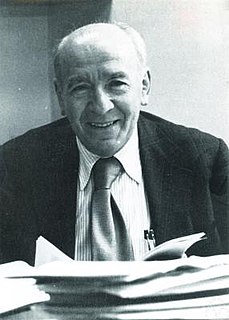 W
WMark Kac was a Polish American mathematician. His main interest was probability theory. His question, "Can one hear the shape of a drum?" set off research into spectral theory, with the idea of understanding the extent to which the spectrum allows one to read back the geometry.
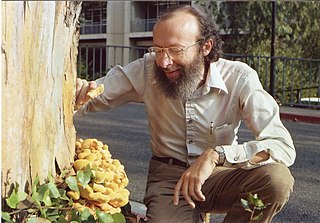 W
WJack Carl Kiefer was an American mathematical statistician at Cornell University and the University of California Berkeley. His research interests included the optimal design of experiments, which was his major research area, as well as a wide variety of topics in mathematical statistics.
 W
WLucien Marie Le Cam was a mathematician and statistician.
 W
WErich Leo Lehmann was an American statistician, who made a major contribution to nonparametric hypothesis testing. He is one of the eponyms of the Lehmann–Scheffé theorem and of the Hodges–Lehmann estimator of the median of a population.
 W
WJerzy Neyman was a Polish mathematician and statistician who spent the first part of his professional career at various institutions in Warsaw, Poland and then at University College London, and the second part at the University of California, Berkeley. Neyman first introduced the modern concept of a confidence interval into statistical hypothesis testing and co-revised Ronald Fisher's null hypothesis testing.
 W
WIngram Olkin was a professor emeritus and chair of statistics and education at Stanford University and the Stanford Graduate School of Education. He is known for developing statistical analysis for evaluating policies, particularly in education, and for his contributions to meta-analysis, statistics education, multivariate analysis, and majorization theory.
 W
WCalyampudi Radhakrishna Rao, FRS known as C R Rao is an Indian-American mathematician and statistician. He is currently professor emeritus at Pennsylvania State University and Research Professor at the University at Buffalo. Rao has been honoured by numerous colloquia, honorary degrees, and festschrifts and was awarded the US National Medal of Science in 2002. The American Statistical Association has described him as "a living legend whose work has influenced not just statistics, but has had far reaching implications for fields as varied as economics, genetics, anthropology, geology, national planning, demography, biometry, and medicine." The Times of India listed Rao as one of the top 10 Indian scientists of all time. Rao is also a Senior Policy and Statistics advisor for the Indian Heart Association non-profit focused on raising South Asian cardiovascular disease awareness.
 W
WNancy Margaret Reid is a Canadian theoretical statistician.
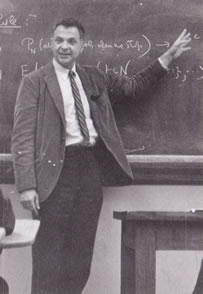 W
WHerbert Ellis Robbins was an American mathematician and statistician. He did research in topology, measure theory, statistics, and a variety of other fields.
 W
WHenry Scheffé was an American statistician. He is known for the Lehmann–Scheffé theorem and Scheffé's method.
 W
WWalter Andrew Shewhart was an American physicist, engineer and statistician, sometimes known as the father of statistical quality control and also related to the Shewhart cycle.
 W
WDavid Oliver Siegmund is an American statistician who has worked extensively on sequential analysis.
 W
WSir Bernard Walter Silverman, is a British statistician and Anglican clergyman. He was Master of St Peter's College, Oxford from 1 October 2003 to 31 December 2009. He is a member of the Statistics Department at Oxford University, and is also attached to the Wellcome Trust Centre for Human Genetics, the Smith School of Enterprise and the Environment, and the Oxford-Man Institute of Quantitative Finance. He has been a member of the Council of Oxford University and of the Council of the Royal Society. He was briefly President of the Royal Statistical Society in January 2010, a position from which he stood down upon announcement of his appointment as Chief Scientific Advisor to the Home Office. He was awarded a Knighthood in the 2018 New Years Honours List, "For public service and services to Science".
 W
WTerence Paul "Teary" Speed, FAA FRS is an Australian statistician. A senior principal research scientist at the Walter and Eliza Hall Institute of Medical Research, he is known for his contributions to the analysis of variance and bioinformatics, and in particular to the analysis of microarray data.
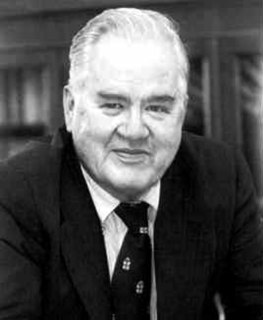 W
WJohn Wilder Tukey was an American mathematician best known for development of the Fast Fourier Transform (FFT) algorithm and box plot. The Tukey range test, the Tukey lambda distribution, the Tukey test of additivity, and the Teichmüller–Tukey lemma all bear his name. He is also credited with coining the term 'bit'.
 W
WSathamangalam Ranga Iyengar Srinivasa Varadhan FRS is an Indian American mathematician who is known for his fundamental contributions to probability theory and in particular for creating a unified theory of large deviations.
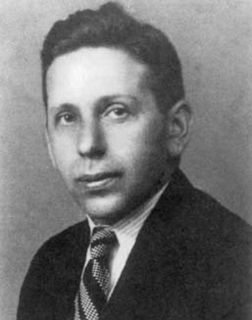 W
WAbraham Wald was a Hungarian Jewish mathematician who contributed to decision theory, geometry, and econometrics, and founded the field of statistical sequential analysis. One of the well known statistical works of his during World War 2 was how to minimize the damage to bomber aircraft taking into account the survivorship bias in his calculations. He spent his researching years at Columbia University.
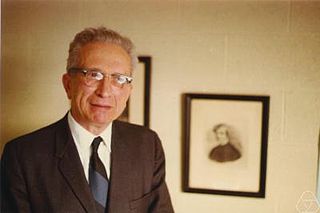 W
WJacob Wolfowitz was a Polish-born American Jewish statistician and Shannon Award-winning information theorist. He was the father of former United States Deputy Secretary of Defense and World Bank Group President Paul Wolfowitz.